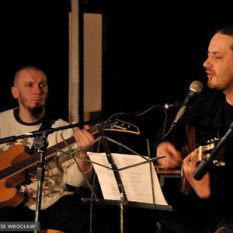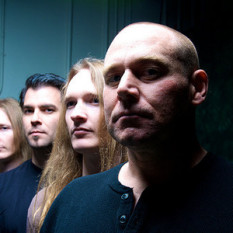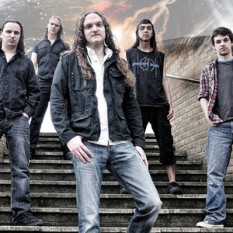Tritonus was founded 1990, by guitar player Carl August Tidemann (Winds/Arcturus). Inspired by the neo-classical style of Yngwie Malmsteen, and progressive acts like Queensryche, Fates Warning and later on, Dream Theater. First lineup also included lead singer Rolf Kristensen, but the band fell apart pretty soon.
In 91/92, there was a trash metal trio, looking for a lead-guitar player. The members were Øystein Moe on bass, Thor-Axel Eriksen on guitar, and Øystein Borge-Hansen on drums. After auditioning several great players, Carl Tidemann showed up, and his musicianship was the missing piece, and what they had been looking for. They rehearsed heavily, and wrote songs, as they were looking for a singer to front the band. Singer Stian Thoresen was the guy who did vocals this period. They covered songs by bands like Sanctuary and Annihilator, but were also trying to find their own musical identity.
Drummer Borge-Hansen left, and was replaced by Jan Axel Blomberg (Hellhammer), of Mayhem. They also added a keyboard player, Oddmar Sæter. And the music changed, to a more progressive direction. Original singer, Rolf Kristensen, was added to the lineup in 1993, and they suddenly had a clearer view of where to go musically. His special voice, and big vocal range, drew them towards music, inspired by the likes of Dream Theater and Fates Warning, once again.
The demo ‘Shadowland’ was released in 1994, and drew a lot of attention, was given some great reviews in various metal magazines. It also gave them a spot on a sampler, released on FaceFront: ‘A Gathering Of 8 Norwegian Prog Metal Bands’. A new drummer, Ole Devold, was just added to the lineup, and two new songs were written for that release. The album also featured great bands like Manitou and Spiral Architect. All of them part of a progressive scene, and the momentum was used at different degrees by the bands.
Tritonus, on their part, used most of the late 90’s to write the songs for their debut album. With the occasional live gig, they used most of the time rehearsing and writing. Keyboard player Oddmar Sæter left, and they recruited youngster Lasse Finbråten (now residing in Circus Maximus). Bass player Øystein Moe, also left, and were replaced by his bass-student, Mathis Dikkanen.
The recordings for the album started in 2000, and were done over a period of 5 years. Guitar player, Thor-Axel Eriksen, also left during these sessions, and Erik Devold was brought in for guitar duties. The album was finished in 2006, but due to different circumstances, a proper release has never been done, until now! The band had a hiatus, until last year, as the booking for ProgPower Oslo made them reunite for the album release, and start playing together, as a band again.
Instead of updating the album, sonically, for an up to date sound, they chose to leave it as originally recorded. Capturing the music, and the band, from the early 2000’s. The album sounds alive and organic and, being recorded in the early years of the digital revolution, the sound is more or less analogue. There has not been any extensive editing, or processing either. In that regard, it will stand out from a lot of contemporary albums. The line-up for 2013, as well as Carl August Tidemann, includes Rolf Kristensen (vocals), Ole Devold (drums) and Thor-Axel Eriksen (guitars). The album also features keyboards from Lasse Finbråten.
.
All albums
You can find information through the best music search engine - Muzlan.top 😊All materials on request "Tritonus" are available on page Tritonus
Yes of course. You can listen tracks on the page Tritonus
Yes of course. You can download tracks on the page Tritonus
This page is found by queries: Tritonus song listen, Tritonus song download, Tritonus track minus, Tritonus remix, Tritonus all mp3




